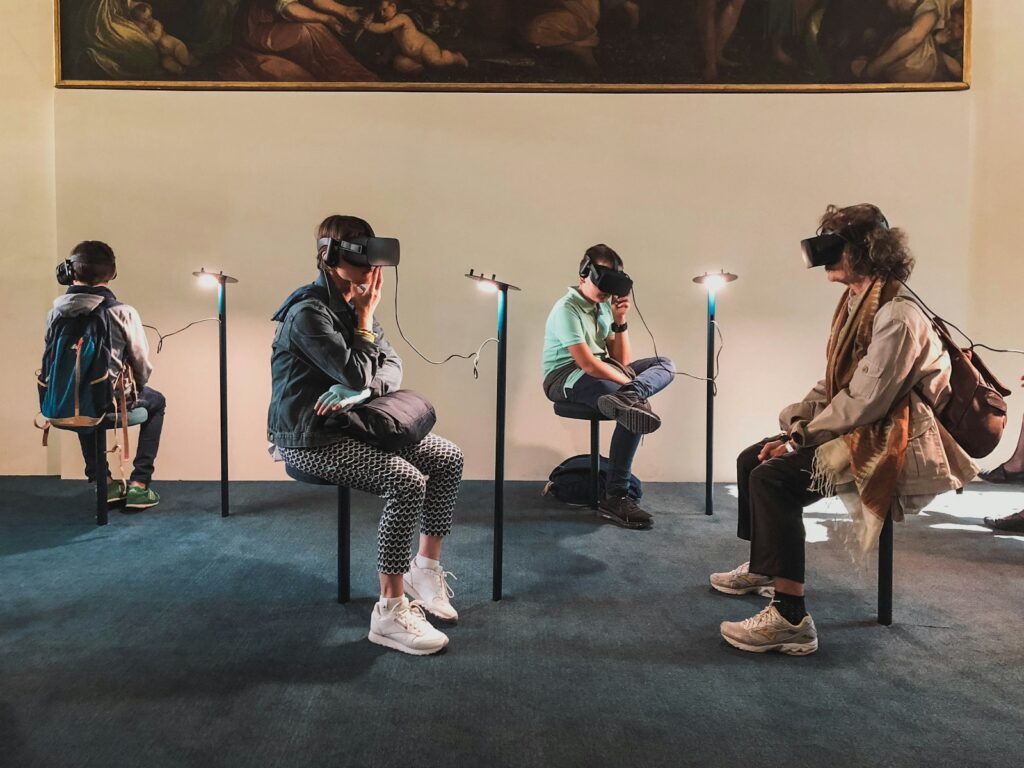Business
Virtual Reality vs. Real-Life Experiences: A Journey Through Two Worlds
Have you ever slipped on a virtual reality headset and found yourself swimming with dolphins or walking on Mars? It’s a thrilling feeling. But then again, think about the salty breeze of the real ocean or the crunch of fresh snow beneath your boots. That’s a different kind of magic altogether.
In today’s world, we have more ways than ever to explore, learn, and connect. Virtual reality (VR) is opening doors to experiences that once lived only in our imaginations. But how does it truly compare to the real world around us?
Let’s take a thoughtful stroll through both realities—one digital, one tangible—and see how they shape our lives in different ways.
The Thrill of Virtual Reality
Let’s start with the exciting stuff.
VR is like a dream you can control. With just a headset, you can climb Mount Everest, battle space robots, or explore the inside of a volcano. No passport. No waiting in line. No risk of frostbite.
For many people, this kind of technology is a game-changer.
- Students can travel the globe without leaving the classroom.
- Doctors can practice surgeries without touching a patient.
- Artists can paint in 3D space with sweeping strokes of light.
Even for pure fun, VR is wild. Want to try skydiving but terrified of heights? Put on the headset. You’ll feel like you’re flying, heart racing and all—without ever leaving the ground.
In other words, VR gives us a safe, affordable, and often amazing way to explore new places and try things we might never do in real life.
The Power of Real-Life Moments
Now close your eyes and imagine holding a warm mug of cocoa on a cold morning. Or the hug of a friend you haven’t seen in years. Or standing at the edge of the Grand Canyon, wind whipping your hair.
That’s real life. And it hits different.
Real-life experiences connect to all our senses—touch, taste, smell, sound, and sight. They aren’t just visuals on a screen. They’re full-body, full-heart experiences. You feel the sun on your skin, smell the pine trees, taste the salty air, hear the crunch of leaves under your feet. It’s real, raw, and unfiltered.
But most of all, real life gives us connection.
You laugh with others. You cry. You look into someone’s eyes and feel understood. There’s a magic in human presence that no computer can replicate.
Comparing the Two: Side by Side
Let’s break it down into key areas where VR and real life overlap—and where they differ.
1. Exploration
- VR: You can explore new worlds instantly. Travel to Paris, walk on the moon, or dive under the sea—all from your living room.
- Real Life: Travel takes time and effort, but it rewards you with real smells, real people, and real memories.
âž¡ï¸ Winner? VR for access. Real life for depth.
2. Learning
- VR: Great for simulations. It’s helpful for pilots, doctors, and engineers to practice skills in a safe space.
- Real Life: Hands-on experience teaches life lessons—like patience, teamwork, and how to react to surprises.
âž¡ï¸ Winner? Both. They work even better together!
3. Connection
- VR: You can meet others in digital spaces. It’s great for long-distance friendships or social anxiety.
- Real Life: Physical presence carries weight. A hug, a handshake, a shared laugh—it all builds trust and bonds.
âž¡ï¸ Winner? Real life. Nothing beats human touch and presence.
4. Convenience
- VR: Easy. No travel time, no packing, no crowds.
- Real Life: Can be messy. Traffic, expenses, weather—sometimes it’s not convenient.
âž¡ï¸ Winner? VR wins for simplicity. But sometimes the mess is part of the memory.
5. Emotion
- VR: Simulated emotion. You might feel scared or excited—but it’s controlled.
- Real Life: Emotion is unpredictable and powerful. That can be hard, but also beautiful.
âž¡ï¸ Winner? Real life for authenticity.
When VR Shines Bright
Let’s not forget—VR isn’t trying to replace real life. It’s here to enhance it.
For people with disabilities or limited mobility, VR offers experiences they may not otherwise enjoy. For kids in rural schools, it can bring global culture to their classroom. For therapists, it can help treat phobias and PTSD in a safe setting.
It’s a tool. A powerful one. And when used with care, it can expand our world.
When Real Life Wins Our Hearts
Think about this:
A VR rollercoaster might feel exciting. But it can’t make your stomach flip quite like the real thing. Watching a sunset in VR might look pretty. But it can’t warm your skin or bring that peaceful, quiet feeling in your chest.
Some things just need to be felt in person.
Real life teaches us through challenge. Through joy. Through unexpected moments we can’t plan.
And real memories—the ones we hold close—often come from getting lost, making mistakes, or laughing until our stomach hurts.
Can the Two Work Together?
Absolutely. In fact, the best future might be one where VR and real life team up.
Imagine using VR to plan a vacation by “walking through†a destination before booking. Or using it to practice public speaking before standing on stage. Even job training can be smoother with a mix of digital and real-life practice.
It’s not about choosing one over the other. It’s about balance.
Use VR to inspire you. Then step outside and live it.
A Quick Recap: The Best of Both Worlds
| Experience | Virtual Reality | Real Life |
|---|---|---|
| Travel | Instant and low-cost | Authentic and rich |
| Learning | Safe and interactive | Personal and hands-on |
| Emotions | Controlled and vivid | Raw and real |
| Connection | Digital social spaces | Physical presence |
| Memories | Simulated snapshots | Deep emotional roots |

